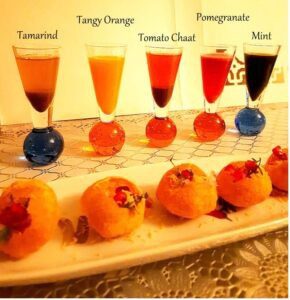Italian Culinary Terms
Indians are obsessed with pastas and pizzas, and their love for this Mediterranean cuisine is only increasing by the day. The ONE food that comes to mind on a game-night is PIZZA and it is the most ordered food in urban set-ups. Pastas are easily available with the tiny seasoning sachets inside the readymade packs. These can be prepared in under 5 minutes flat.
I know some people who live on both these foods as a staple 😀


But, cooking Italian food the authentic way, is a different story altogether. Italian food is not spicy. It is all about fresh flavours and using seasonal produce. Those who want to try their hand at cooking Italian food, this article can just get you started. These are just a couple of terms I have listed here, there is a vast glossary out there. Initially, I was a little intimidated by these terms, but I guess, you need to take it one day at a time (which is what I am doing now) and keep learning.
Fresh veggies, olive oil, wine, cheese and pasta form an integral part of this cuisine. So, if you intend cooking it, in it’s true form, then knowing a few commonly used terms would certainly help. Among the long list of Italian culinary terms, I chose to share a couple of them here. Hope you find it an interesting read.


I have no qualms in sharing my blunders while I first started learning to cook Italian. For instance, I really thought it is ok to cook pasta just like we cook rice. But, obviously I was wrong. This happened because at that time I had never heard of the term ‘Al Dente’. The term literally means ‘to the tooth’
The term ‘Al dente’ literally means ‘to the tooth’
The Italians cook their pasta just enough. That means it has a bite to it. It should not be overly cooked.
For example : In North Italy the pasta has softer consistency, while in South the Italians
prefer firmer bite to their pastas. But in both cases, a CHALKY pasta is a complete NO-NO
neither should pasta be soggy. I wonder who would eat a soggy one – not me.
Do remember
that pasta continues to cook for a while after it has been drained and then further
cooks while combining it with sauces over the heat.
So suit yourself there is no pasta police out there to arrest you.



In Italian antipasto literally means ‘before the meals’
What we call as starters or appetizers, are known as ‘antipasti’ (plural) in Italian. These are predominantly vegetables like pepperoncini, mushrooms, and artichoke hearts and a selection of cured meats like prosciutto and capicola.
While I had assumed that this word sounded as if someone didn’t want pasta or didn’t like pasta.
I know it’s hilarious, but my brain activity can be like that at times.




Classic Cacio e Pepe


This I had to share.
So when I first read the name of this dish, I got the term Cacio completely wrong. I assumed it has something to do with capsicum and bell peppers. But upon checking I was really surprised to see that Cacio is a type of cheese.
This classic Roman pasta dish has got it’s name from two main ingredients : Pecorino cheese and black pepper. Cacio e pepe, translates to “cheese and pepper,” Pecorino cheese, in Roman dialect is known as Cacio, and black pepper.
Let not the simplicity of this dish fool you. If prepared with the best quality ingredients, it will keep you coming back for more each time, for the rest of your life.


